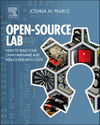Improved model and experimental validation of deformation in fused filament fabrication of polylactic acid

|
By Michigan Tech's Open Sustainability Technology Lab.
Wanted: Students to make a distributed future with solar-powered open-source RepRap 3-D printing and recyclebot recycling. |

|
| This page is part of an international project hosted by MOST to use RepRap 3-D printing to make OSAT for sustainable development. Learn more.
Research: Open source 3-D printing of OSAT • RecycleBot • LCA of home recycling • Green Distributed Recycling • Ethical Filament • LCA of distributed manufacturing • RepRap LCA Energy and CO2 • Solar-powered RepRaps • solar powered recyclebot • Feasibility hub • Mechanical testing • Lessons learned • MOST RepRap Build Make me: Want to build a MOST RepRap? - Start here! • Delta Build Overview:MOST • Athena Build Overview • MOST metal 3-D printer • Humanitarian Crisis Response 3-D Printer |
Contents
Source
- Wijnen, B., Sanders, P. & Pearce, J.M. Improved model and experimental validation of deformation in fused filament fabrication of polylactic acid. Progress in Additive Manufacturing 3(4), pp. 193–203 (2018). https://doi.org/10.1007/s40964-018-0052-4 open access
- Open source code : https://osf.io/4kvwm/
Abstract
RepRaps (self-replicating rapid prototypers), which 3D print objects using fused filament fabrication (FFF), have evolved rapidly since their open-source introduction. These 3D printers have primarily been limited to desktop sizes of volumes of ~ 8000 cm3, which has limited the attention of the scientific community to investigating deformation of common thermoplastics such as polylactic acid (PLA) used in FFF printing. The only existing physically relevant deformation model was expanded here to use a physics-based temperature gradient instead of a step function. This was necessary to generalize the model to 3D printing in a room temperature environment without a heated chamber. The thermal equation was calibrated using thermal measurements and validated by measuring curvatures in printed objects. The results confirm that this is a valid model for predicting warpage of thin vertical walls of PLA. In addition, the effect of annealing was examined. It was found that at a temperature of 50 °C, no shrinkage or crystallization takes place, but at 90 °C the PLA rapidly crystallizes to around 20% crystallinity. This indicates that heated bed temperatures should be maintained at 50 °C or lower to avoid print failure (premature substrate release) with PLA. At 90 °C, the annealing is accompanied by a 5% size decrease in both horizontal dimensions, but an 8% increase in the vertical dimension. Thus, the volume decreased by only 3%. This observation may lead to potential methods of improving slicing of printing large PLA objects with FFF.
Keywords
3D printing, RepRap, Open hardware, Quality assurance, reliability; Fused filament fabrication; Fused deposition modeling; Deformation; Poly lactic acid
See Also
- Factors effecting real-time optical monitoring of fused filament 3D printing
- Mechanical Properties of Components Fabricated with Open-Source 3-D Printers Under Realistic Environmental Conditions
- The Effects of PLA Color on Material Properties of 3-D Printed Components
- Viability of Distributed Manufacturing of Bicycle Components with 3-D Printing: CEN Standardized Polylactic Acid Pedal Testing
- Applications of RepRap distributed production - literature review
